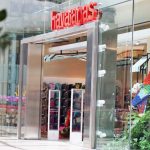Nautilus, Inc. reported a steep decline in sales in the fiscal third quarter ended December 31, slashed its full0-year outlook for the second straight quarter and said it would reduce its workforce by approximately 15 percent as part of further cost-reduction actions.
On a conference call with analysts, Nautilus’ CEO Jim Barr stressed that the company still sees a path to profitability, noting that strategic margin management initiatives have been implemented that drove gross profit and EBITDA improvement in the third quarter. Planned improvements in inventory levels and advertising spending reductions helped reduce losses in the period.
Nautilus also continues to see membership growth at JRNY, its digital fitness platform, which the company said added more than 50,000 new members in Q3, reaching approximately 450,000 total members, an increase of over 88 percent compared to the same period last year. Of these members, 156,000 were subscribers, representing a 134 percent growth year-over-year.
On the downside, Nautilus continues to face headwinds in its retail channel and has taken “deliberate actions to address them and return to positive EBITDA in 2024.”
This resulted in a 6 percent decline in sales in its retail segment compared to the pre-pandemic third quarter of fiscal 2020, excluding sales related to the Octane brand, which was sold in October 2020. Said Barr, “Retailers continue to take a conservative approach across many categories, including home fitness, as a result of inventory positions and uncertainty in the near-term economic environment. So, while sell-through to consumers at retail is progressing, we are seeing lower levels of reorders, which is impacting our sale outlook for our retail segment in the fourth quarter and likely into the first half of fiscal 2024.”
He added, “We have taken additional near-term steps to rightsize our business to reflect our current expectations. With our strong market share and have significantly increased the number of retailers and retail doors over the past couple years, we believe the retail channel will remain an important long-term component of our business model as the macro environment stabilizes.”
To mitigate the impact of the challenges in the retail segment, Nautilus reduced its workforce by approximately 15 percent. In addition, Nautilus reduced its contracted labor. Said Barr, “These actions, while difficult, are grounded in our priority to continue to align our cost structure with our revenue expectations and are aimed at driving profitability and improving cash flow.”
Third-Quarter Sales Declined 33 Percent
In the third quarter ended December 31, sales slumped 33.4 percent to $98.1 million year over year. Excluding sales related to the Octane brand, sales were up 9 percent when compared to the same pre-pandemic period in fiscal 2020. The sales decline versus last year is driven primarily by the return to pre-pandemic seasonal demand.
The net loss was reduced to $11.1 million, or 35 cents a share, from $13.5 million or 43 cents, last year.
Gross margins improved 300 basis points to 23.3 percent compared to 20.3 percent last year, primarily due to decreases in inventory adjustments (positive 300 basis points), lower product costs (positive 200 basis points), partially offset by unfavorable logistics overhead absorption (negative 100 basis points) and higher outbound freight (100 basis points). Investments in JRNY, its digital fitness platform, were lower in dollars versus the prior year and negatively affected gross margins by only 40 basis points.
Operating expenses were slashed 32.7 percent to $33.1 million, reaching 33.7 percent of sales against 33.4 percent a year ago. The net decrease of $16.1 million was primarily driven by $12.7 million lower media spending, a decrease of $2.1 million due to other cost savings, and a $1.3 million decrease in other variable selling and marketing expenses due to decreased sales. Total advertising expenses were $9.5 million this year versus $22.3 million last year.
Nautilus’ operating loss was $10.3 million compared to an operating loss of $19.3 million last year, primarily driven by improved gross margins and lower operating expenses.
Direct Segment Revenues Sink 23 Percent
In the Direct Segment, sales declined 23.0 percent in the quarter to $46.7 million year over year but were up 30.2 percent, compared to the same period in fiscal 2020. The year-over-year decrease was primarily driven by the return to pre-pandemic seasonal demand and pre-pandemic sales discounting practices.
Cardio sales declined 8.9 percent versus last year and were up 9.1 percent compared to the same period in fiscal 2020. Lower cardio sales this quarter versus last year were primarily driven by lower demand for Max Trainer and elliptical equipment. Strength product sales tumbled 43.0 percent versus last year but were up 131.0 percent compared to the same period in fiscal 2020. Lower strength sales this quarter versus last year were primarily driven by lower demand for SelectTech weights.
As of December 31, 2022, the Direct segment’s backlog totaled $2.1 million against $8.8 million a year ago.
Gross margins in the Direct segment eroded to 26.3 percent versus 29.8 percent last year. The
Segment’s operating loss was $6.5 million, or 13.8 percent of sales, compared to the segment contribution loss of $9.0 million, or 14.8 percent of sales, last year. The improvement was primarily driven by decreased media spend, partially offset by lower gross profit. Direct advertising expenses were $8.9 million compared to $16.1 million for the same period last year.
Retail Segment’s Revenues Decline 41 Percent
Retail segment sales declined 41.0 percent to $50.6 million from $85.7 million a year ago and were down 6 percent compared to the same period in fiscal 2020, excluding sales related to the Octane brand. Retail segment sales outside the U.S. and Canada were down 66.7 percent versus last year. The net decrease compared to last year is primarily driven by the return to pre-pandemic seasonal demand.
Cardio sales fell 43.7 percent versus last year and were down 40.5 percent compared to the same period in fiscal 2020, excluding sales related to the Octane brand. Lower cardio sales this quarter were primarily driven by lower demand for Max Trainer and elliptical equipment. Strength product sales dropped 38.9 percent versus last year and increased 61.1 percent compared to the same period in fiscal 2020. Lower strength sales this quarter were primarily driven by lower demand for home gyms.
As of December 31, 2022, the Retail segment’s backlog totaled $16.8 million against a backlog totaled $44.2 million a year ago.
Gross margins in the segment improved to 19.4 percent versus 12.8 percent last year due to a decrease in inventory adjustments and decreased discounting. The retail segment’s operating income was $3.4 million, or 6.8 percent of sales, a slight increase versus income of $3.3 million, or 3.8 percent of sales, last year. The increase was primarily driven by cost savings and partially offset by lower gross profit.
Inventory was $77.3 million, down 30 percent compared to $111.2 million as of March 31, 2022 and down 40 percent versus the same quarter last year. The year-over-year decrease in inventory was driven by sell-through and strong inventory management as the company continued to right-size inventory levels. About 18 percent of inventory as of December 31, was in transit.
Barr said inventory levels are expected to come down further in the coming quarters and the company is implementing other cost-reduction initiatives aimed at improving cash flow to support its balance sheet.
“We are actively managing near-term challenges within the business while remaining committed to our North Star strategy, which is made up of five key pillars: adopt a consumer-first mindset; scale a differentiated digital offering; focus investments on our core businesses; evolve our supply chain to be a strategic advantage and build organizational capabilities to win,” said Barr. “We have made strong progress on all these pillars over the past two years, and I firmly believe we have set the foundation for our path to becoming a leader in connected fitness by leveraging our equipment business and scaling a differentiated offer.”
Barr said the company has an “exciting pipeline of new products” planned for the calendar year 2023, including updated connected fitness equipment carrying its new Bowflex digital branding. Barr said, “It’s important to stress that we make money in the equipment business and this will be key to our path back to profitability.”
At the same time, Barr said “tremendous progress” has been made in establishing the JRNY online platform. Nautilus recently debuted JRNY with motion tracking, which offers personalized form coaching and feedback, rep counting and individualized workout recommendations. The feature is designed to work with Bowflex SelectTech 552s and Bowflex SelectTech 1090 dumbbells as well as on Android and iOS tablets.
Nautilus continues to target approximately 500,000 JRNY members by the end of the fiscal year, which implies approximately 54 percent year-over-year growth in fiscal 2023. Nautilus is also seeing progress on conversion to paid subscribers, which are growing faster members. The membership progress is enabling Nautilus to reduce near-term spend.
Barr also said Nautilus still sees a healthy long-term opportunity for home fitness. He said, “Our research shows the shift to home exercise remains steady now for two-plus years. Over 65 percent of U.S. adults recently surveyed continue to say they work out at home up from 43 percent who reported the same at the beginning of 2020. In our target segments, this trend is even more pronounced with about 85 percent working out at home. This is a prevailing shift in trends and Nautilus is well positioned to take advantage of this sustainable increase and demand in our long-term addressable markets.”
Nautilus’ updated guidance calls for:
- Full-year revenue of about $270 million, down 59.4 percent from $664.9 million a year ago. The decline in revenue is primarily due to lower expectations in the Retail segment. Sales had been expected in the range of $315 million and $365 million.
- Full-year Adjusted EBITDA loss, excluding restructuring costs, to be approximately $50 million compared to the prior range of adjusted EBITDA loss of between $30 million and $40 million.
Photo courtesy Nautilus
















